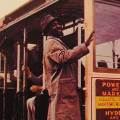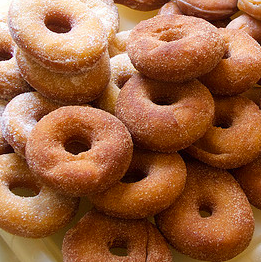United Airlines and the Case for Value

I read an interesting article about Applebee’s last week. Personally, I don’t like Applebee’s or its numerous imitators – not eating burgers, chicken tenders, or something they call “riblets” kind of limits the menu of the average Americana-themed restaurant for me – but I enjoyed the analysis of how these kinds of places are trying to survive in an economically challenging environment.
My favorite part was when the CEO was asked why Applebee’s and IHOP (also owned by the company) don’t have healthier choices on their menu. People are more health-conscious than ever, right?
“What people want and what they say they want are different,” she said, and as much as I wanted to disagree, I couldn’t.
This idea, my friends, is especially true with business-to-consumer relationships. In the example of restaurants, people may say they want healthy choices, but (many of them) actually want to go and eat food that is bad for them.
If Applebee’s replaced the mozzarella sticks (531 calories) with a large order of carrot sticks (120 calories), they might win some good press, but their average diner wouldn’t start eating more carrots. He or she would go down the street to the T.G.I. Friday’s or wherever else offered the food they really, really wanted – not the food they said they wanted.
Even though it doesn’t attract customers like me, Applebee’s seems to understand what their typical diner wants. But in other cases, companies fail to see the disconnect between what people want and what they say they want…. or they may even manipulate the feedback to reinforce what they wanted to do in the first place.
For example, people may say they want the lowest-priced airline without any concern for comfort, but that’s not usually true.
Most of us know how stressful travel can be, and we don’t appreciate it when airlines cut out the little things that can make the experience slightly better. We know it’s not going to be great, but we really do want the pillows, soft drinks, and advance seat assignments that the airlines have been cutting out. It doesn’t take much to provide them, but when you take them away, we’re not happy.
The solution to this problem is not to take even more away, like United Airlines did recently.
United recently announced an all-new series of steps to cut out service on its flights. To begin with, United will no longer offer meals to Economy Class passengers traveling to Europe from Washington, D.C. Instead, they’ll receive the same service provided on their flights throughout the U.S., where you can purchase a sandwich for $11. United is also taking away the free pretzels (really), reducing staffing even further, and discontinuing the lunch service for Business Class passengers on domestic flights.
That’s right, no pretzels, fewer flight attendants, and if you fly to Europe from D.C., you won’t even get a meal. People used to joke about airline cuts – “One day they’ll charge us for seats after we’ve already boarded the plane.” Ha ha.
But wait – one guy who flew JetBlue was forced to sit in the lavatory for 3 hours earlier this year because he was on a discounted ticket. I wish it were a joke this time, but JetBlue has no comment.
Back to United – as several travel bloggers have been pointing out (see here and here, for example), the latest cutbacks represent a new low for the already-low U.S. airlines. It’s a race to the bottom, and those of us who travel frequently are starting to wonder when we’ll finally hit it.
Isn’t it just the cost of fuel?
The airlines say that fuel cost is the main reason for these kinds of cutbacks, but no one really believes that. Oil was at $145 a few weeks ago. Now it’s back to $118, but the same fuel surcharges are still there. Do you think they just forgot to reset them? And how do other worldwide airlines manage to be profitable even with the price of oil being so high?
The funny thing is that United claims to have made these latest changes based on “customer feedback.” I find that claim to be even more disingenuous. Does United expect us to believe that passengers said they no longer want to eat on the flight? Oh, and go ahead and take away the free pretzels while you’re at it?
I’d like to say to United, “You know, go ahead and do this. It will harm your shareholder value in the long-term, since business travelers have even less of an incentive to travel now. But please, don’t lie to us about it. Just say you don’t want to give away pretzels anymore.”
Why Competing on Price Is a Losing Prospect
Choosing to compete on price alone is almost always a mistake. Unless you can be the next Wal-Mart, it’s not worth trying.
It’s usually better to give customers what they really want – quality, value, an experience worth talking about – and not the lowest price and lowest service that they may say they want.
Even in the airline industry, some airlines manage to do this. Emirates does, as does Virgin Atlantic most of the time, and even the budget Kingfisher Airlines in India. When flying from Hyderabad to Calcutta in March, I got a full meal and a soft drink – no extra charge. There were no pretzels, but the lentils were quite nice.
***
If you’re in business for yourself, what do you think about commodity pricing and cutbacks? Are you in a race for the bottom, or are you trying to provide good products and services for a fair price?
And everyone else, what do you really want from a business like United Airlines or Applebee’s?
###
Image by SummerTX







16 Comments
I have inherited my Father’s high cholesterol and actually do try to eat properly ..(Although I do feel that cholesterol is probably the medical hype of the day… Still…) I-Hop and Applebees both carry low fat and low calorie meals. But out here, they are the only restaurants that actually do carry such fare… I-HOP has the garden scramble with low calorie syrup at 600 cals and Applebees carries the Tilapia and Broccoli meal… I like both (Thank God!) …
Nice blog! jegan 😉
The way to make money isn’t just to give customers what they want – if all businesses do that then again it becomes a question of price competition. The key is to differentiate yourself from your competition which then gives you monopoly pricing power. You can only win on pricing if you have a durable cost advantage over the competition. One example is the Walmart type model you mention where you have increasing returns and as your output increases your costs fall. Your competitors’ costs rise as you take customers from them and eventually you push them out of business. But a cost advantage could also be technological or something else.
People want to eat healthy, but they want it to taste like the foods that are bad for them, and they don’t want to have to think about their food any more than “it tastes good”. If it happens to be good for them (or not quite as bad) then bonus. The same is true for all consumer goods and services. The masses want things to be cheap, good for the environment, good for the workers, and tie their shoe laces, but they don’t want to think about it, seek it out, pay extra, or have to care. They have needs that must be satisfied as cheaply as possible in the shortest time possible. There is generally no motivation to think about.
I think United’s statement about “based on customer feedback” means that they cut out the things the majority said they could live without and still fly with them. I doubt the cutbacks were customer demands.
Cutting service is one thing… cutting flights halfway through is another.
I flew with United about four months ago. I was scheduled to fly to Chicago and then to London; they actually flew me to Madison (a weather delay and then crew problems) and said ‘get to Chicago however you can – there are car rental places downstairs’. Obviously I missed my connection and ended up spending pretty much a full day at O’Hare… and they still seem to believe that refunding my fare is ‘inappropriate’.
I’m still fuming.
I just returned to Seattle from Tanzania, a 24+ hour series of flights on three different carriers, and I can tell you that I really appreciated the free food and drinks I recieved on Precision Air, Virgin Atlantic, and Northwest/KLM. Now, I know that food wasn’t free – it’s part of the price of my plane ticket – but I’d rather have the illusion of hospitality. When I fly home to Alaska for Christmas, Alaska Airlines will charge me $5 for a soggy ham and cheese sandwhich. I find this insulting. I’d prefer it if they charged me $5 more for my ticket and gave me the sandwhich for “free”. Most consumers perceive value in proportion to total cost: a $5 discount on a $10 item is a great deal, but a $5 discount on a $500 ticket will hardly outweigh the appearance of bad service.
[…] Chris Guillebeau at The Art of Non-Conformity recently published an interesting post. What’s also important to note is what a business thinks people want and what people actually want are different. The difficult part is to find what’s suitable for the most majority of your market. […]
Removing their sad little lunches and drinks is just silly. As is the fuel surcharge and extra baggage charges. It’s akin to buying a $79.00 cellphone plan only to be presented with the $120 bill “with all the extras”…. Or buying a $29 tire to walk out with a $40 bill after taxes, EPA fees, balancing mounting and valve stem….
Could be worse though… You might buy a $6.00 sandwich at one of the pre-flight kiosks and get charged $25 for the ‘extra carry-on’….
jegan 😉
This article makes a lot of sense – it’s easy for us to be convinced that the presentation of what is good and healthy for us in the mainstream media is as they say it is. I don’t doubt that carrot sticks are healthier than fried mozarella, but it’s pretty one-dimensional and naive to go along with the party line and pretend that eating is only about being healthy. Only the most radical would believe something like that and yet it’s often presented to us in that fashion when all the attention it may deserve on the evening news is the thirty seconds before the real story.
In my view, the reason you shouldn’t compete merely on price is inextricably bound up with a more complete view of what we experience and value. I’m not a big fan of Applebee’s either, but the whole experience of eating at a restaurant should be taken into consideration when choosing what to put on a menu and not merely whether or not something on your plate in front of you is actually healthy or at or below a certain price. Most people I know understand this intuitively and value and choose which restaurants they go to and what they buy based on the whole story and not just a part of it.
The airlines are constantly in trouble and in my view most of it stems from the way our economy works, their rather unscrupulous business practices in always wanting to pass costs on to the consumer that they incur as a result of their shortsightedness , and the way they (usually wrongly) bet off of oil futures. The one exception for a long time of course has been Southwest Airlines and you notice they’ve got the sense not to charge for bags. If the airlines were smart, they’d raise their fare prices $10-15 per flight rather than charge for bags (since it is always going up and down and most consumers don’t have a way to measure why you’re paying $250 as opposed to $450 for a flight). But, these latest moves by the airlines simply show they’re completely disconnected from what their customers really want or care about.
When I travel internationally, I really like Lufthansa though it’s been some time since I’ve been up in the air outside the US. What’s important to me about an airline is exceptional service, the ability to have enough planes in the air to make scheduling very easy even on only a day or two’s notice, and an airline that doesn’t sweat the little stuff (like United – an airline I absolutely despise for that very reason). If I have to pick between flying on a plane with rude stewardesses and late flights versus a smooth and easy on-time flight and the on-time flight costs $100 more – you can bet I’m going for the on-time flight with nice stewardesses and my guess is that most regular business travelers would do the same. For the average consumer, it’s likely not as important but if all you do is travel these things become a lot more important than some people realize.
I’ve done a lot of business traveling and really like US Airways for that though it helps to have the main hub in your home town (Phoenix, AZ – pretty easy to get a one way almost anywhere in the US). And, for what it’s worth, I pay extra to be able to use the airport clubs – getting work done between flights is a lot easier and more comfortable and for $300+ or so a year it’s definitely worth it.
But this all comes back to experience – what it is you value and what it is you think is important. I’m sure others out there would disagree with the way I do things – business owners just need to take into account more than just their own view in competing strictly on price.
In our business, if we competed on price we’d compete with Starbucks and the other McDonald’s of the coffee world. I don’t want to go there. Sometimes our price will be less, sometimes more than what some impersonal gigantic multinational corporation is going to charge. We don’t want to compete with them and consider them nothing more than advertising for us for people to eventually find and buy our products. The quality we put out is everything their products should be but can’t be because they have to mass produce a product to keep up with their demand.
But, like most exceptional small businesses – we’re about providing the best to our customers and stuff they can’t get anywhere else. And, we love doing it. People are willing to pay big money for that and they should – because it’s something of great value in this world.
I’m sitting here, enjoying my first cup of coffee for the day and smiling in amusement.
Why?
Because it’s true that what people say what they want and what they actually want are two different things. Applebee’s was smart to find out from their existing customers what they want and they gave it to them.
Why can’t the airlines do the same thing? Do they think they have a monopoly to the point where their customers don’t matter anymore? Do they think we don’t have a choice? But we do, don’t we?
What is “Applebees” ? An American food chain ?
Great discussion, everyone. Thank you.
@Cheryl,
Yes, Applebee’s is a chain of casual dining restaurants. It is primarily North American, but they are in 16 other countries as well:
http://www.applebees.com/ilocations.aspx#locations
Chris…good article. You would think that everyone would want to belong to a gym and want to exercise..however, what they really want is the infomercial sold “thingy” that you strap to your stomach that “helps” you to have 6 Pack abs in 6 days…in essence the masses truly want the magic pill…
From Chris’ post:
“The funny thing is that United claims to have made these latest changes based on ‘customer feedback.’”
Now…close your eyes and imagine the following conversation somewhere in an airport terminal….
Customer A: This really bites. United cuts out the meals, then substitutes with these puny pretzels. What a joke. Who needs it?
Customer B: You are so right. We don’t need puny pretzels in place of a real meal….
United employee within earshot: Hey Frank, did you hear that? They don’t want the pretzels any more. Dump ‘em!
And there you have it, folks. Market research at its finest.
I’m still angry that Applebee’s doesn’t really have much for Vegetarians, and IHOP is a disaster in my book.
Food can still be healthy and taste good.
As far as the airlines go, I am lucky to get full service being in the military, but I cannot imagine a trip to Europe without a meal. The Airline industry cutting back can only hurt sales and unless they change their business model, I cannot see many of them surviving for long.
good i like the united and applebee…
so is normal in people having divergent minds of us.
all in life that right?
دانلود آهنگ های جدید از خواننده های معروف ایرانی که شما میتوانید همه این آهنگ هارو از لینک زیر دانلود کنید.
https://ahang.cafe/دانلود-تک-آهنگ/
Your comments are welcome! Please be nice and use your real name.
If you have a website, include it in the website field (not in the text of the comment).
Want to see your photo in the comments? Visit Gravatar.com to get one.